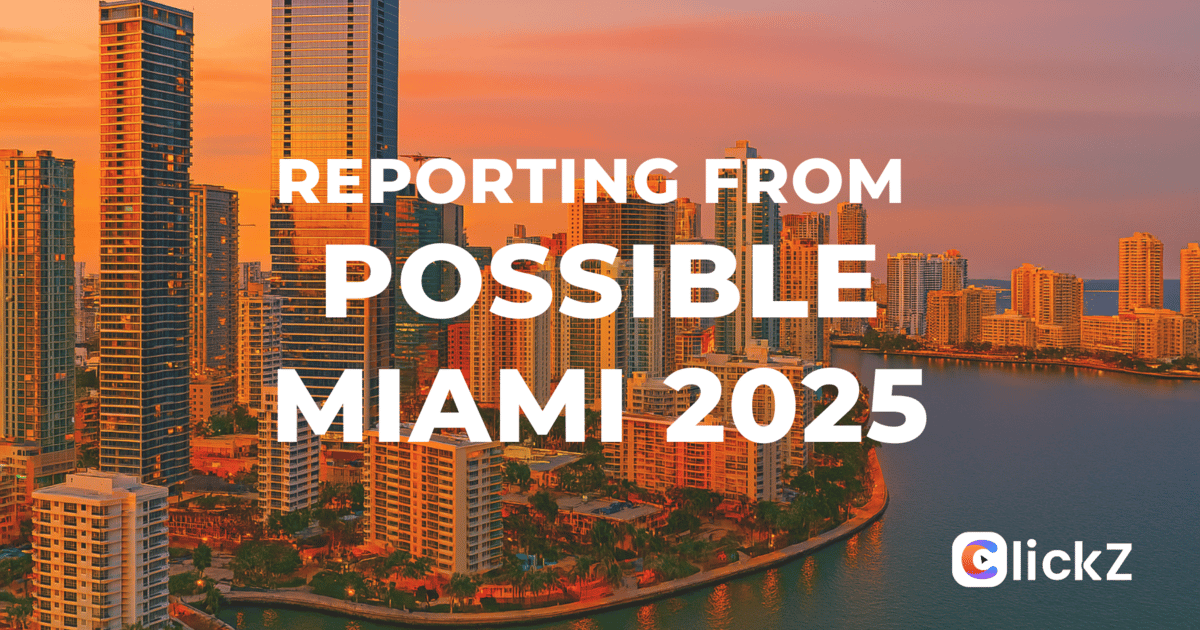At POSSIBLE 2025, Google’s Lorraine Twohill and R/GA’s Tiffany Rolfe sat down to explore what AI means for marketers. But instead of focusing on tools or trends, the session got to something deeper: how creativity, team culture, and quality storytelling evolve when AI becomes part of the process.
Twohill, one of the most influential CMOs in the world, leads a global team responsible for telling the story of some of the most used products on the planet from Android and YouTube to Google Cloud and Search. The AI moment, she said, isn’t theoretical anymore. It’s a shift in how teams work, how creative is made, and how marketing proves its value.
Where AI Is Delivering and Where It’s Not (Yet)
Twohill broke AI into three clear lanes:
Everyday productivity (summarizing, writing, reviewing)
Media and measurement (especially across Google Ads)
Creative development (from ideation to scale)
In the first two areas, she sees major gains. Teams are moving faster, spending less time on manual processes, and unlocking new insights especially in measurement, where AI is helping close feedback loops and inform spend strategy.
Creative is still evolving. While AI accelerates execution and helps teams get to concept faster, the quality bar remains high. The challenge now is learning how to collaborate with these tools, not just use them, to push imagination, not just scale.
Speed, Scale, and Safeguards
Google’s own marketing teams are experimenting rapidly but with clear standards. Twohill emphasized that the company’s creative output must meet the same standards it always has, regardless of how it's made. That includes brand integrity, inclusive representation, and quality of message.
What’s changed is the speed and flexibility. Google is now producing hundreds of thousands of personalized assets across languages, audiences, and formats. That level of scale would have been impossible a few years ago but now happens with a fraction of the resources and approvals.
Still, human checkpoints remain built into the process. Every AI-generated output goes through review and QA. The goal isn’t replacement it’s acceleration with accountability.
Redefining the Creative Brief
Rolfe and Twohill discussed how AI is forcing teams to rethink what a creative brief even is. Instead of planning for fixed campaigns with locked assets, marketers are starting to design systems building modular creative that can flex across platforms, test in-market, and evolve based on results.
That shift also changes how teams are structured. At Google, marketing, product, and engineering now collaborate more closely than ever not just to ship product stories, but to design experiences that feel helpful, dynamic, and native to the new ways people search, learn, and buy.
Experimentation as Culture, Not Exception
Twohill was clear: experimentation is now a core team behavior, not a side project. Teams are encouraged to test tools like Circle to Search, voice-to-code, and dynamic video workflows. The biggest unlock isn’t just functional, it’s cultural. People feel empowered to try, iterate, and move fast even if they’re not “experts” in AI.
This democratization of creativity is one of the biggest shifts Twohill sees. The barriers to entry are lower. The tools are easier to access. And the expectation is that everyone on the team not just creatives or engineers learns how to play with the medium.
Creativity, Still Led by Story
Amid the hype, Twohill returned to the core idea: storytelling still leads. AI can help make stories faster, more relevant, and more personalized but it can’t invent heart. That still comes from people.
She pointed to recent work on Android, where AI-enabled asset creation allowed developers and users to generate on-brand visuals and ideas at scale. But the emotional clarity, the message, the tone, the purpose, still came from thoughtful human direction.
Where to Start: Advice for CMOs and Creators
Twohill’s closing advice was twofold:
Use the tools yourself. If you’re leading teams through AI, you need to get hands-on. Even planning a birthday party or writing a daily plan with AI can help unlock ideas.
Build a culture of experimentation. Don’t wait for perfect. Start small. Encourage teams to test early and share learnings often. Marketing teams that grow with AI will be the ones who learn while doing.
For Google’s CMO, the story of marketing in the AI era isn’t about automation it’s about adaptation. And the brands that win will be the ones who raise the creative bar while learning to move at AI speed.
📲 Like what you’re seeing?
💬 Want to swap ideas or talk strategy while you're here?
Book a quick meeting with the ClickZ team — we'd love to hear what you're working on.
Heads up! To ensure you continue receiving our newsletters, please add [email protected] to your contact list!
Independently Created. Not affiliated with POSSIBLE.

ClickZ is a ClickZ Media publication in the Events division



